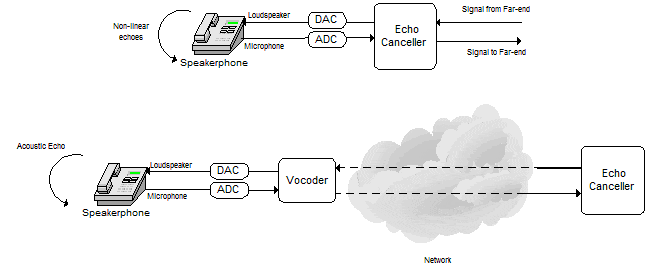Post filtering of echo cancellation systems is important for environments with large levels of non-linear distortion. Non-linear distortions of the echo path can result from the loudspeaker microphone enclosure and overdriven loudspeaker signals. Another source of non-linear distortions is when the echo cancellation is moved away from the loudspeaker microphone enclosure to a centralized location, such as an IP gateway. The low bit-rate vocoders such as, MELP and ITU G.722.2, are now located in the echo path. The adaptive filters of an echo canceller can only cancel the linear portions of the echo path, thus the non-linear portions cannot be removed via the adaptive filter and require post filter to remove the residual echo.

| (1) |
or
| (2) |
where D̂(ω) is the estimate of the residual echo.
The main challenge is to get an accurate estimate of the residual echo spectrum. There are several approaches to determining this value. One method to perform the estimation is to first determined when we are in an echo only state. Once this state has been determined, a ratio of the long term average of the error power to excitation power, can be used as a coupling factor measure, β(ω). This coupling factor will provide an estimate of the attenuation achieved through the system. Therefore, D̂(ω) = β(ω)X(ω), can be used as an estimate for the residual echo in (2). As (2) illuminated in systems with high levels of non-linear distortion, such as those in packet-based telephony, D̂(ω) will be large and H(ω) will approach 0. Hence, more residual echo will be suppressed.